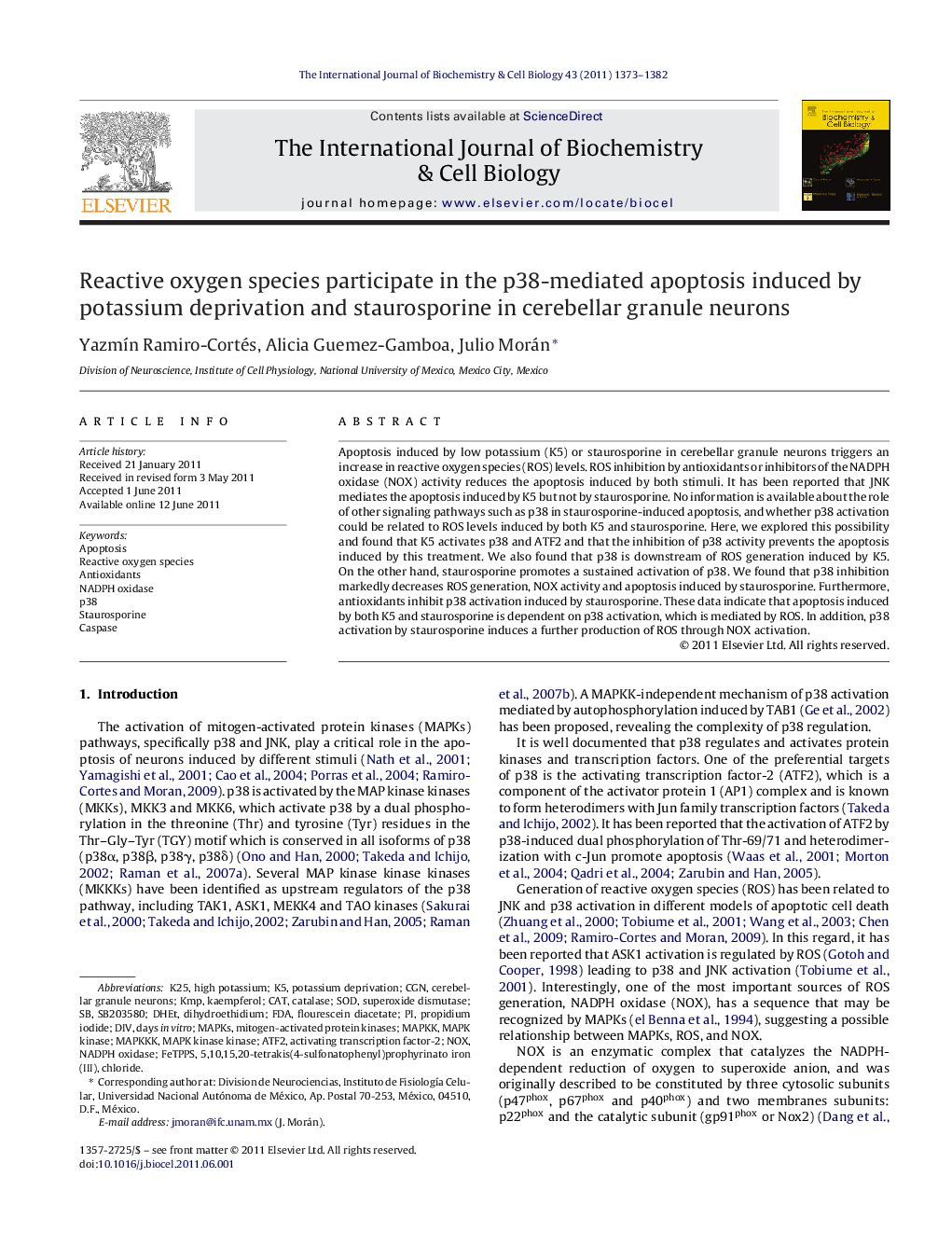| Article ID | Journal | Published Year | Pages | File Type |
|---|---|---|---|---|
| 1983647 | The International Journal of Biochemistry & Cell Biology | 2011 | 10 Pages |
Abstract
Apoptosis induced by low potassium (K5) or staurosporine in cerebellar granule neurons triggers an increase in reactive oxygen species (ROS) levels. ROS inhibition by antioxidants or inhibitors of the NADPH oxidase (NOX) activity reduces the apoptosis induced by both stimuli. It has been reported that JNK mediates the apoptosis induced by K5 but not by staurosporine. No information is available about the role of other signaling pathways such as p38 in staurosporine-induced apoptosis, and whether p38 activation could be related to ROS levels induced by both K5 and staurosporine. Here, we explored this possibility and found that K5 activates p38 and ATF2 and that the inhibition of p38 activity prevents the apoptosis induced by this treatment. We also found that p38 is downstream of ROS generation induced by K5. On the other hand, staurosporine promotes a sustained activation of p38. We found that p38 inhibition markedly decreases ROS generation, NOX activity and apoptosis induced by staurosporine. Furthermore, antioxidants inhibit p38 activation induced by staurosporine. These data indicate that apoptosis induced by both K5 and staurosporine is dependent on p38 activation, which is mediated by ROS. In addition, p38 activation by staurosporine induces a further production of ROS through NOX activation.
Keywords
MAPKKKCGNp38ATF2KMPSB203580MAPKKCATPotassium deprivationFDAFeTPPSK25DHETMAPKsMAPK kinaseMAPK kinase kinaseNOxAntioxidantsstaurosporineNADPH oxidaseApoptosisdihydroethidiumDIVdays in vitroSODSuperoxide dismutaseactivating transcription factor-2cerebellar granule neuronsHigh potassiumPropidium iodideKaempferolCatalasecaspasemitogen-activated protein kinasesReactive oxygen species
Related Topics
Life Sciences
Biochemistry, Genetics and Molecular Biology
Biochemistry
Authors
YazmÃn Ramiro-Cortés, Alicia Guemez-Gamboa, Julio Morán,
